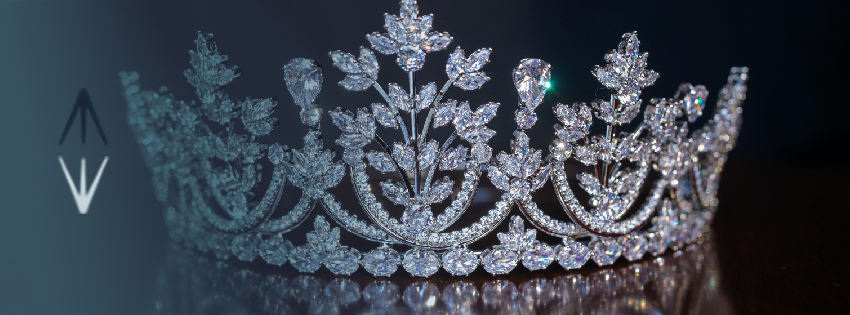Diamonds have fascinated humanity for centuries due to their beauty, rarity, and the stories that accompany them. Since ancient times, they have been considered symbols of power, wealth, and luxury. The legends and myths surrounding many famous diamonds have added an aura of mystery and allure. Each of these diamonds is valued not only for its unique physical characteristics, such as its color, cut, and clarity, but also for the intricate stories of how they were discovered, their various owners throughout history, and the adventures, tragedies, and legends woven around them. In this post, we will explore the history and features of some of the world’s most famous diamonds, highlighting both their gemological value and the fascinating narratives that have contributed to their global fame.
Importance of Historic Diamonds
Historic diamonds not only have significant economic value but also serve as silent witnesses to important historical and cultural events. Over the centuries, these diamonds have passed from hand to hand among kings, emperors, and magnates, often being central pieces in peace treaties, gifts of courtesy between monarchs, and spoils of war. Moreover, many have been associated with supposed curses and mystical powers, thus increasing their mystique and attraction.
The Fascination Continues
Today, historic diamonds continue to capture the imagination of the public and collectors alike. Auctions of historic diamonds attract buyers from around the world willing to pay astronomical sums to own a piece of history. Additionally, exhibitions in museums and private collections allow the general public to admire these gemological marvels, ensuring their legacy endures for generations.
Detailed Exploration
In the following sections, we will delve into the history, characteristics, and legends of some of the world’s most famous diamonds. From the enigmatic Hope Diamond to the majestic Cullinan, each diamond has a unique story to tell, full of intrigue, luxury, and often, mystery.
1. The Hope Diamond
History of the Hope Diamond
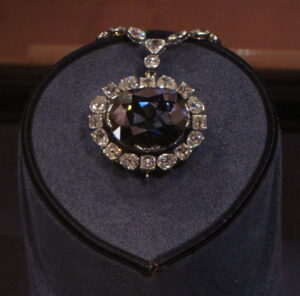 The Hope Diamond is one of the most famous and legendary diamonds in the world. It is believed to have been discovered in the Kollur mine in Golconda, India, in the 17th century. Originally part of a much larger diamond known as the “Bleu de France,” it was acquired by French merchant Jean-Baptiste Tavernier. The diamond was later bought by King Louis XIV of France in 1668, who cut it into a 67.12-carat diamond known as the “Blue Diamond of the Crown” or “Bleu de France.” During the French Revolution, the diamond was stolen and reappeared in London in 1839, where it was acquired by Henry Philip Hope, giving it its current name.
The Hope Diamond is one of the most famous and legendary diamonds in the world. It is believed to have been discovered in the Kollur mine in Golconda, India, in the 17th century. Originally part of a much larger diamond known as the “Bleu de France,” it was acquired by French merchant Jean-Baptiste Tavernier. The diamond was later bought by King Louis XIV of France in 1668, who cut it into a 67.12-carat diamond known as the “Blue Diamond of the Crown” or “Bleu de France.” During the French Revolution, the diamond was stolen and reappeared in London in 1839, where it was acquired by Henry Philip Hope, giving it its current name.
Characteristics of the Hope Diamond
This diamond weighs 45.52 carats and is known for its impressive deep blue color, caused by traces of boron in its crystal structure. Its cut is an antique cushion shape, and its clarity is remarkably high, contributing to its dazzling brilliance.
Famous Owners of the Hope Diamond
Throughout its history, the Hope Diamond has passed through the hands of several famous owners, including Louis XIV of France, who used it as part of the crown jewels. After the theft during the French Revolution, the diamond passed through various hands until it was acquired by the Hope family. Later, it was bought by American socialite Evalyn Walsh McLean and eventually donated to the Smithsonian National Museum of Natural History in Washington D.C., where it currently resides.
Legends and Myths of the Hope Diamond
The Hope Diamond is surrounded by numerous legends and myths that have contributed to its fame and mystery. It is said that the diamond is cursed, bringing misfortune and bad luck to its owners. Some stories claim that the curse began when the diamond was stolen from a statue of a Hindu deity. Over the years, many of its owners have been said to have suffered tragic accidents, bankruptcies, and even deaths, thus increasing the mysticism around the diamond.
2. The Cullinan
History of the Cullinan
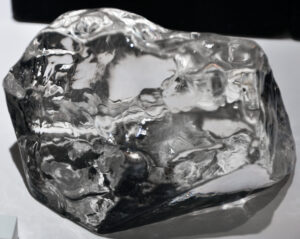 The Cullinan is the largest diamond ever found, discovered in the Premier mine in South Africa in 1905 by Frederick Wells, the mine’s superintendent. The rough diamond weighed 3,106 carats and was named after Sir Thomas Cullinan, the mine’s owner.
The Cullinan is the largest diamond ever found, discovered in the Premier mine in South Africa in 1905 by Frederick Wells, the mine’s superintendent. The rough diamond weighed 3,106 carats and was named after Sir Thomas Cullinan, the mine’s owner.
Characteristics of the Cullinan
The diamond was cut into several smaller stones by Joseph Asscher and his team in Amsterdam. The two largest are the Cullinan I, also known as the “Great Star of Africa,” which weighs 530.2 carats and is mounted in the British sovereign’s scepter, and the Cullinan II, which weighs 317.4 carats and is set in the Imperial State Crown. The Cullinan I is the largest clean-cut diamond in the world.
Current Location of the Cullinan
The largest fragments of the Cullinan are part of the British Crown Jewels and are displayed in the Tower of London. Other smaller fragments are in the possession of the British royal family and in private collections. These diamonds remain symbols of the opulence and history of the British monarchy.
3. The Koh-i-Noor
History
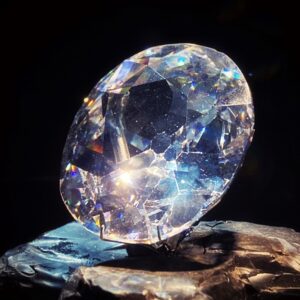 The Koh-i-Noor, whose name means “Mountain of Light” in Persian, has a history spanning over 700 years. It was discovered in the Golconda mines in India. This diamond has passed through the hands of several rulers and emperors, including those of the Mughal Empire, the Persian Empire, and the Sikh Empire.
The Koh-i-Noor, whose name means “Mountain of Light” in Persian, has a history spanning over 700 years. It was discovered in the Golconda mines in India. This diamond has passed through the hands of several rulers and emperors, including those of the Mughal Empire, the Persian Empire, and the Sikh Empire.
Characteristics
The Koh-i-Noor weighs 105.6 carats and is known for its transparency and purity. Originally, the diamond was much larger but was recut to improve its brilliance.
Historical Owners
This diamond has been part of the treasure of several Indian and Persian dynasties. In 1849, after the British annexation of Punjab, the Koh-i-Noor was given to Queen Victoria, and since then, it has been part of the British Crown Jewels.
Controversies
The Koh-i-Noor remains the subject of disputes among India, Pakistan, Iran, and Afghanistan, which all claim its return. Each country has its own version of how it came into British hands, and all consider that it should be repatriated.
4. The Orloff Diamond
History
The Orloff was discovered in the Golconda mines in India and is famous for its size and history linked to Russian royalty. According to legend, it was stolen from the eye of a statue of a Hindu god and was later acquired by Prince Grigory Orloff, who gave it to Empress Catherine the Great of Russia.
Characteristics
The Orloff weighs approximately 189.62 carats and has a pale blue-green color. Its cut is an old Indian style known as “rose cut,” which enhances its size and brilliance.
Connection with Russian Royalty
The Orloff diamond is in the Imperial Scepter of Russia and is part of the Russian crown jewels, symbolizing the power and wealth of the empire.
5. The Regent Diamond
History
Discovered in 1698 in India, the Regent diamond has had several owners. It was acquired by Thomas Pitt, British governor of Madras, who bought it in India and later sold it to the Regent of France, Philip II, Duke of Orleans.
Characteristics
The Regent diamond weighs 140.64 carats and is known for its pure white color and exceptional clarity and cut. It is one of the most perfect diamonds ever found.
Current Location
Currently, the Regent diamond is part of the French crown jewels and is displayed in the Louvre Museum in Paris. Its impeccable quality and rich history make it one of the most precious and admired gems in the world.
6. The Sancy Diamond
History
The Sancy has a history of over 600 years, discovered in the Golconda mines, India. It has passed through the hands of several European monarchs, including the King of Portugal, Henry IV of France, and James I of England. Its name comes from Nicolas Harlay de Sancy, a French diplomat who owned it in the 16th century.
Characteristics
This diamond weighs 55.23 carats and is known for its pale yellow color and double-rose cut, giving it a unique and attractive appearance.
Famous Owners
The Sancy has been owned by notable historical figures such as Charles the Bold, who lost it in battle, and James I of England, who acquired it later. It was also part of the Bourbon treasure in France.
7. The Tiffany Yellow
History
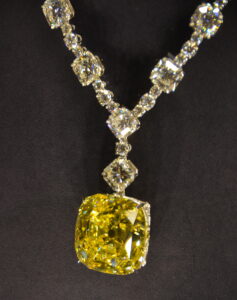 Discovered in South Africa in 1878, the Tiffany Yellow diamond was bought by Charles Tiffany, the founder of Tiffany & Co. This diamond quickly became an emblem of the prestigious jewelry company.
Discovered in South Africa in 1878, the Tiffany Yellow diamond was bought by Charles Tiffany, the founder of Tiffany & Co. This diamond quickly became an emblem of the prestigious jewelry company.
Characteristics
It weighs 128.54 carats and is famous for its canary yellow color and modified cushion cut. This special cut enhances its color and brilliance, making it stand out among other colored diamonds.
Connection with Tiffany Jewelry
The Tiffany Yellow has been exhibited on numerous occasions and is a centerpiece of Tiffany & Co.’s collection. It has been worn by only a few people, including Audrey Hepburn for the promotion of “Breakfast at Tiffany’s.”
8. The Darya-i-Noor Diamond
History
The Darya-i-Noor, meaning “Sea of Light” in Persian, was discovered in the Golconda mines in India. It has been part of the treasures of several empires, including the Mughal Empire and the Persian Empire.
Characteristics
This diamond weighs around 182 carats and is of a rare light pink color. Its size and color make it one of the most impressive and valuable diamonds in the world.
Historical Significance
The diamond has been an important jewel in the courts of Mughal and Persian emperors. Currently, it is part of Iran’s national treasury and is a centerpiece in the Iranian crown jewels, symbolizing the historical power and wealth of the country.
Conclusion
Historic diamonds are valued not only for their beauty and rarity but also for the fascinating stories and legends that surround them. These diamonds have passed through the hands of monarchs, emperors, and magnates and have witnessed significant historical events. From the enigmatic Hope Diamond to the majestic Cullinan, each of these diamonds has a unique narrative that adds immeasurable value beyond its physical appearance. By knowing their stories, we can better appreciate the cultural impact and enduring legacy of these gemological treasures.
Frequently Asked Questions about the Most Famous Diamonds
What is the most famous diamond in the world?
The most famous diamond in the world is the Hope Diamond, known for its impressive blue color and its mysterious legend of bad luck.
What makes a diamond considered historic?
A diamond is considered historic due to its age, rarity, unique characteristics, and its history rich in significant events and notable owners.
Where can these diamonds be seen today?
Many of these diamonds are displayed in museums and royal collections, such as the Louvre Museum in Paris, the Tower of London, and the Smithsonian Institution in Washington D.C.
Why is the Koh-i-Noor so controversial?
The Koh-i-Noor is controversial due to disputes over its ownership among several countries, including India, Pakistan, Iran, and Afghanistan, each claiming its return and considering it part of their cultural heritage.

